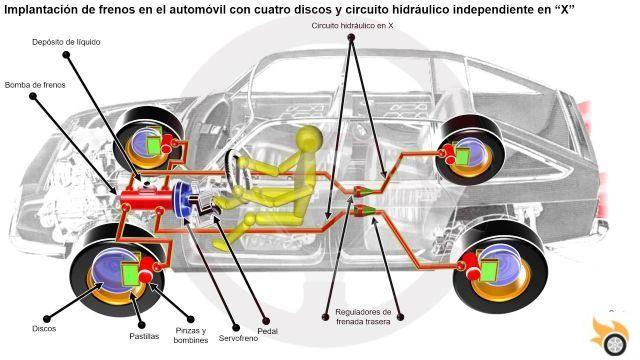
In the automotive industry, safety has always been a priority. Over the years, numerous technologies have been developed to improve the safety of cars and protect the occupants in the event of an accident. One of the most significant advances in this regard is the ABS anti-lock braking system.
Origin of the ABS anti-lock braking system
The ABS anti-lock braking system was first developed in the 1950s by the Dunlop aerospace company. Initially, it was designed for use in aircraft, but its potential was soon realized in the automotive industry. In 1978, Mercedes-Benz became the first car manufacturer to offer ABS in one of its models, the S-Class.
History and evolution of the ABS system
Over the years, the ABS anti-lock braking system has undergone numerous improvements and evolutions. In its early versions, the ABS system was only available in luxury vehicles, but over time it has become more common in all types of cars. In the 1980s, other car manufacturers such as BMW and Ford began to offer ABS on their vehicles.
In the 1990s, a new generation of ABS systems was introduced that offered greater control and precision. These systems used electronic sensors to monitor wheel speed and adjust brake pressure individually on each wheel. This allowed for more efficient braking and reduced stopping distance in an emergency.
In recent years, the ABS system has continued to evolve with the incorporation of new technologies. For example, some vehicles now feature an enhanced ABS system that also includes Electronic Stability Control (ESC), which helps prevent skidding and loss of control in difficult driving situations.
Other milestones in car safety
In addition to the ABS anti-lock braking system, there are other important advances in car safety. One of these is the air bag, which was invented in the 1950s but didn't become popular until the 1980s. Air bags are inflatable bags that automatically deploy in the event of a collision and help protect vehicle occupants.
Another milestone in car safety is the seat belt, which was first introduced in the 1950s. The seat belt is a restraint device that is worn around the occupant's body and helps prevent injury in the event of accident or sudden stop.
Frequently Asked Questions (FAQs)
1. What is the main function of the ABS anti-lock braking system?
The main function of the ABS anti-lock braking system is to prevent the wheels from locking during braking. This allows the driver to maintain control of the vehicle and reduce stopping distance in an emergency.
2. Are all cars equipped with ABS?
No, not all cars come equipped with ABS anti-lock braking system as standard. However, it is becoming more and more common to find it in modern vehicles, especially those of the medium and high range.
Conclusion
The ABS anti-lock braking system has been a significant advance in automobile safety. Over the years, it has evolved and improved, allowing for more efficient braking and reducing stopping distances in an emergency. Along with other safety advances such as airbags and seatbelts, ABS has helped make cars increasingly safer for their occupants.
We hope this article has been informative and has helped you better understand the origin, history, and evolution of the ABS anti-lock braking system in automobiles. If you have any additional questions, feel free to leave a comment below. We would love to hear your opinion!
Until next time!


























